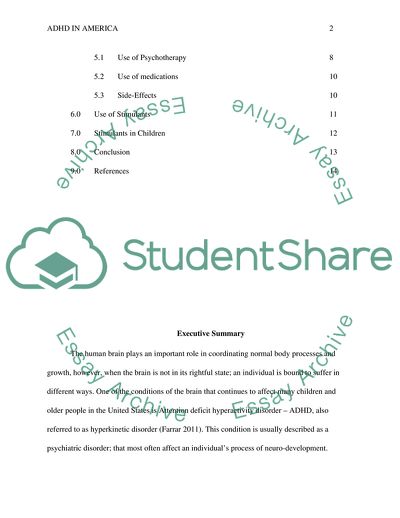Cite this document
(Attention Deficit Hyperactivity Disorder in Children Term Paper Example | Topics and Well Written Essays - 2750 words, n.d.)
Attention Deficit Hyperactivity Disorder in Children Term Paper Example | Topics and Well Written Essays - 2750 words. https://studentshare.org/psychology/1839548-adhd-in-america-how-the-symptoms-of-adhd-can-often-be-misinterpreted-as-being-a-different-problem-such-as-a-learning-disability-and-when-it-is-left-untreated-it-can-result-in-a-lifetime-of-difficulties
Attention Deficit Hyperactivity Disorder in Children Term Paper Example | Topics and Well Written Essays - 2750 words. https://studentshare.org/psychology/1839548-adhd-in-america-how-the-symptoms-of-adhd-can-often-be-misinterpreted-as-being-a-different-problem-such-as-a-learning-disability-and-when-it-is-left-untreated-it-can-result-in-a-lifetime-of-difficulties
(Attention Deficit Hyperactivity Disorder in Children Term Paper Example | Topics and Well Written Essays - 2750 Words)
Attention Deficit Hyperactivity Disorder in Children Term Paper Example | Topics and Well Written Essays - 2750 Words. https://studentshare.org/psychology/1839548-adhd-in-america-how-the-symptoms-of-adhd-can-often-be-misinterpreted-as-being-a-different-problem-such-as-a-learning-disability-and-when-it-is-left-untreated-it-can-result-in-a-lifetime-of-difficulties.
Attention Deficit Hyperactivity Disorder in Children Term Paper Example | Topics and Well Written Essays - 2750 Words. https://studentshare.org/psychology/1839548-adhd-in-america-how-the-symptoms-of-adhd-can-often-be-misinterpreted-as-being-a-different-problem-such-as-a-learning-disability-and-when-it-is-left-untreated-it-can-result-in-a-lifetime-of-difficulties.
“Attention Deficit Hyperactivity Disorder in Children Term Paper Example | Topics and Well Written Essays - 2750 Words”. https://studentshare.org/psychology/1839548-adhd-in-america-how-the-symptoms-of-adhd-can-often-be-misinterpreted-as-being-a-different-problem-such-as-a-learning-disability-and-when-it-is-left-untreated-it-can-result-in-a-lifetime-of-difficulties.


